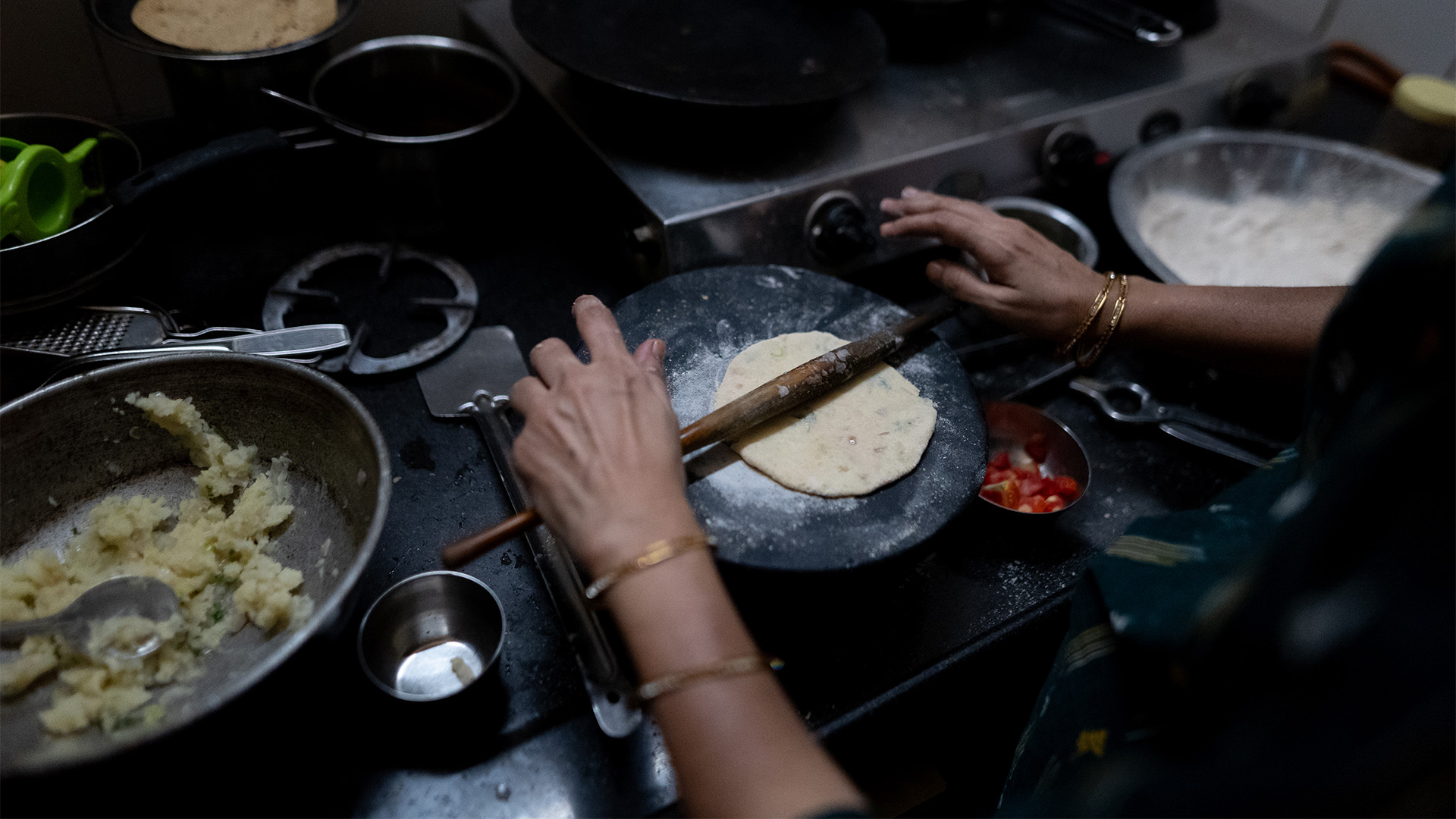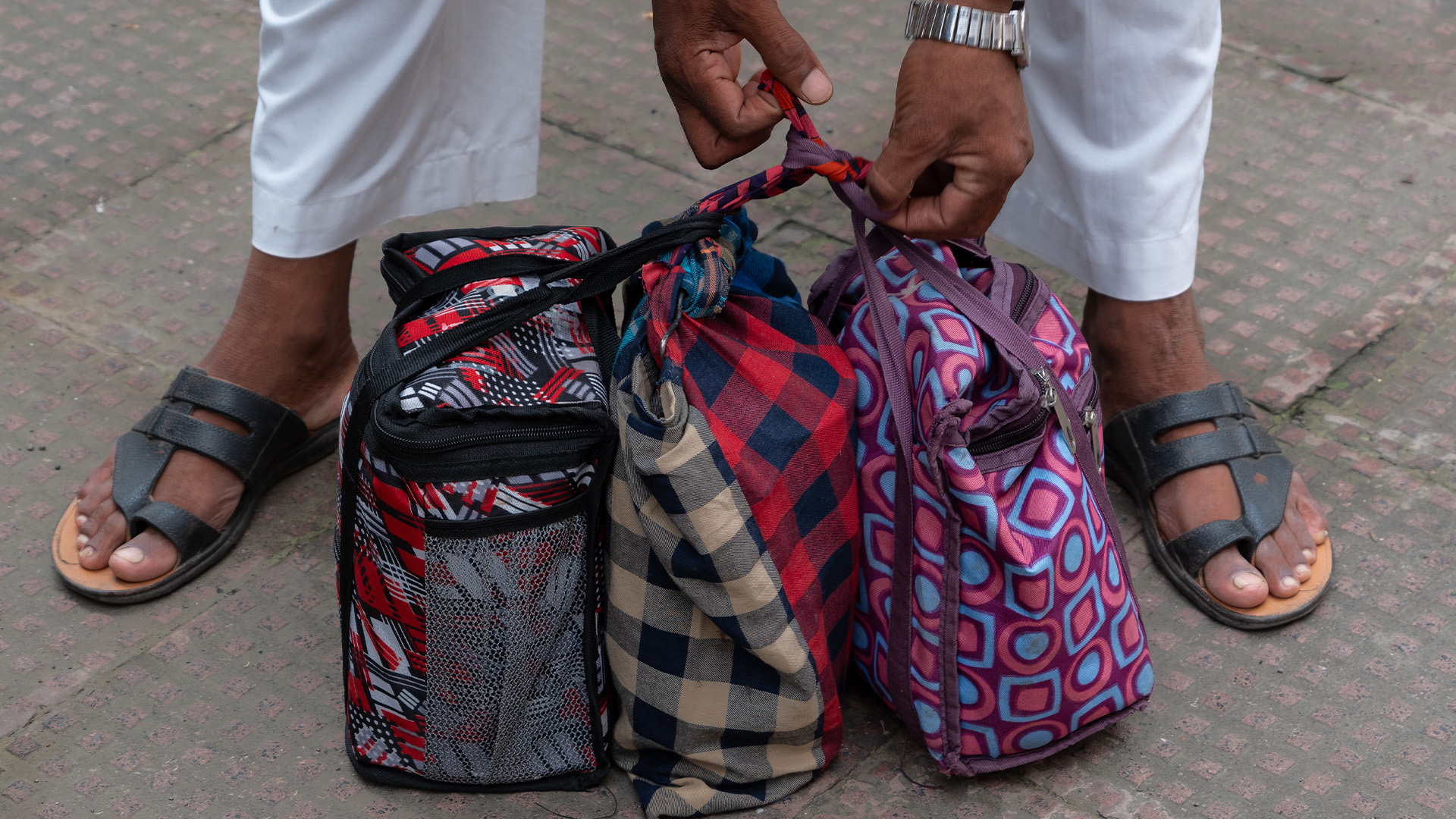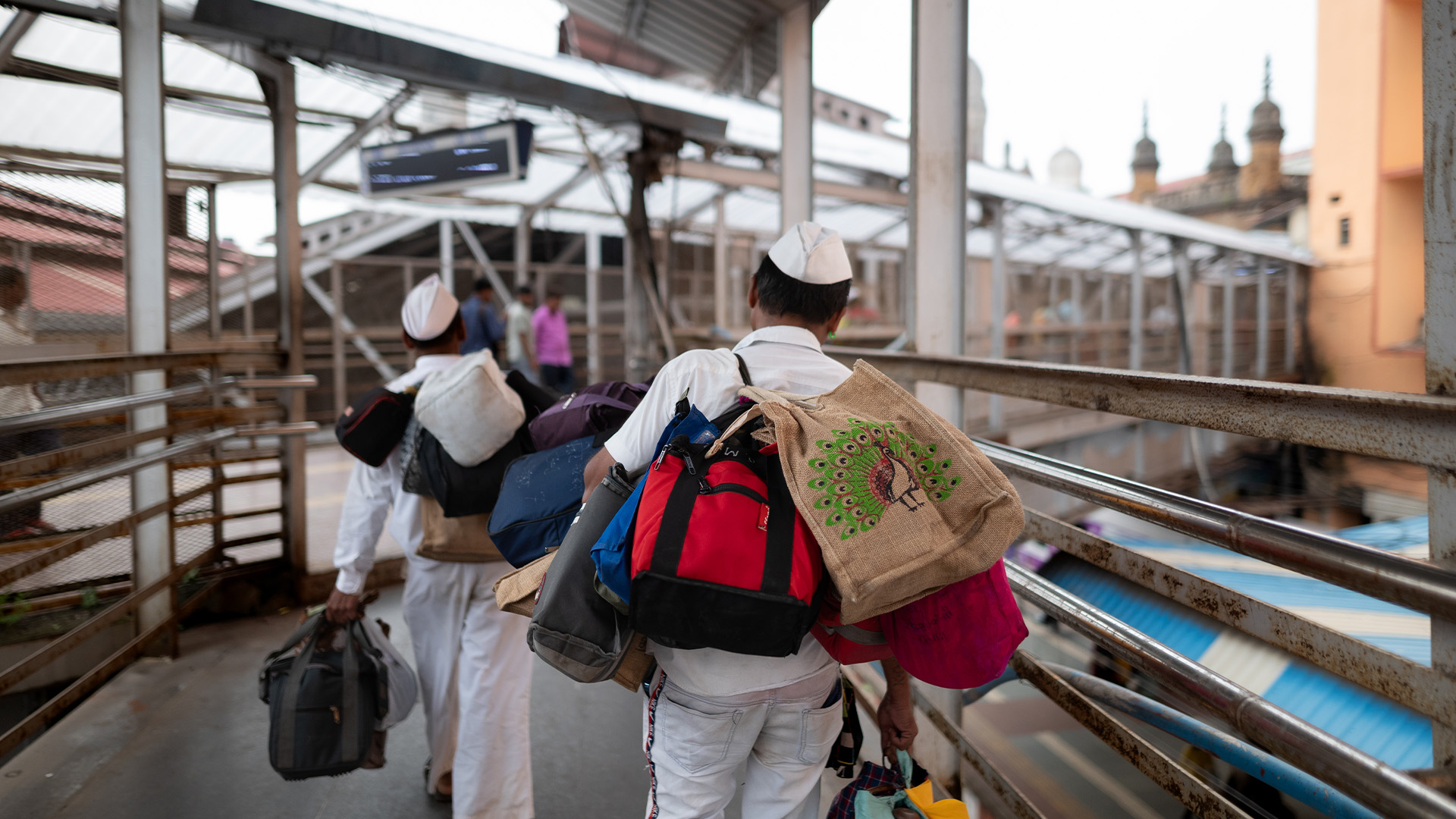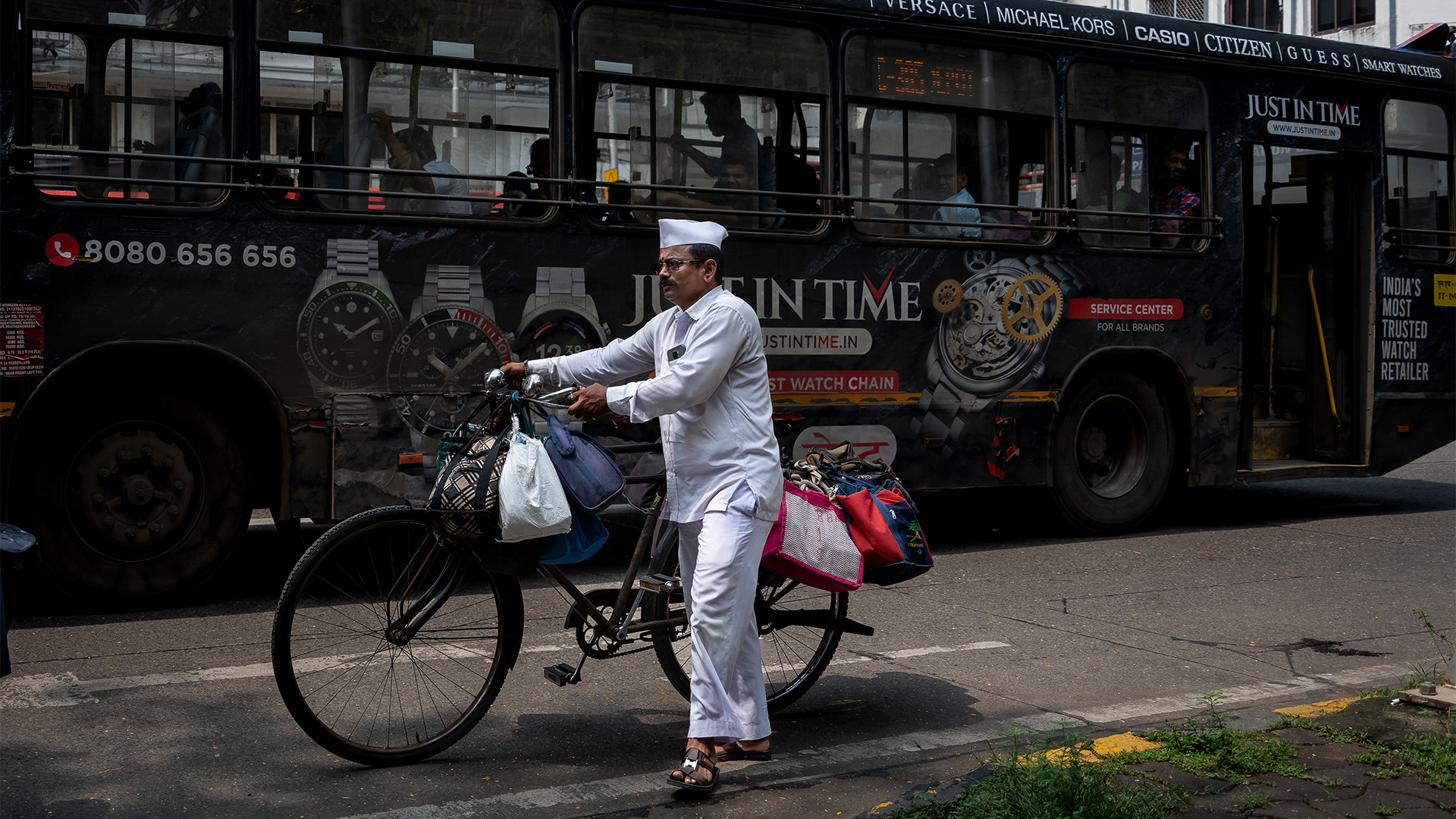
Photography by Anindito Mukherjee
Businesses around the world suffered an economic hit when the pandemic took hold, but e-commerce entered a period of unprecedented growth as locked-down consumers turned to the internet to satisfy their grocery and shopping needs.
The pandemic is behind us and stores’ shutters have lifted, but online shopping habits remain and people – many of them still working from home – want the speed and convenience of same-day or overnight delivery.
The push for accelerated delivery has created a supply chain arms race, as retailers and distributors compete to deliver products, parcels and perishables into cities within tight timeframes.
This is transforming last mile logistics (the final step between the distribution facility and the consumer), creating a need for new assets in and around dense urban areas. It also puts the sector in a dilemma: more deliveries generate more traffic, noise and pollution, threatening net zero carbon targets and causing concern for residents. It makes the very concept of fast delivery problematic and creates more stress for courier companies and their drivers.
With cities stuck in a bottleneck, some logistics and real estate experts are looking for low carbon solutions. The stripped back approach to urban supply chain management followed by the 133-year old dabbawala service in Mumbai may help inform a leaner and cleaner last mile.
Translated as the ‘ones who carry the box,’ the 5,000-strong cooperative criss-crosses the bustling Indian metropolis delivering hundreds of thousands of home-cooked lunches to workers. Recognised as one of the world’s most efficient logistics systems, having attracted global attention and visits by the likes of King Charles, Richard Branson, and employees of FedEx, the service exploits sustainable transport by foot, bicycle or train. Workers don’t rely on IT and instead use a basic alphanumeric code to ensure deliveries reach the right place at the right time. They are dedicated and highly motivated, thanks in part to their highly valued status in the culture.






Sigma-sational
Many Indian office workers still enjoy the comfort of home-cooking and the dabbawalas offer a cheap service (roughly 800 rupees, or less than £10, a month) to pick up pre-prepared meals from customers’ houses and deliver them to their workplace in time for lunch. Its success is in part due to overcrowding on trains during rush hours, making it difficult for citizens to carry their own lunchboxes to work.
App-based food-delivery companies Deliveroo and Uber Eats, and their equivalents in India like Swiggy and Runnr, can’t hold a candle to the incredible service record of this industrious troop.
The dabbawalas system was graded ‘Six Sigma’ in a 2010 study by the Harvard Business School, which means it makes fewer than 3.4 mistakes per million transactions. With almost 200,000 deliveries six days a week, that equates to just over 200 missing or delayed lunchboxes a year.
That’s no mean feat if you consider that the dabbawalas are self-managed, mostly without formal education and must navigate their way through the sixth most populated city on Earth without the use of modern technology.
According to Harvard Business School, the secret is an organisational system whose basic pillars - organisation, management, process, and culture - are perfectly aligned and mutually reinforcing.
A key enabler is the Mumbai Suburban Railway, one of the most extensive commuter lines in the world, whose layout allows delivery people on foot, with bicycles and handcarts to travel short distances between the stations and customers’ homes and offices.
A tight delivery schedule – lunchboxes must reach the client by 1pm every day and it can take up to three hours to deliver them – synchronises and disciplines workers amid the chaos of the city. For example, dabbawalas have 40 seconds to load crates of lunchboxes onto a train at major stations and just 20 seconds at interim stops.
Each dabbawala has a dedicated collection and delivery area and every morning they tour their neighbourhood on foot or bicycle, collecting an average of 30 lunchboxes. The boxes are taken to a local office or railway station to be sorted for transport to delivery areas by train. Once the meals arrive, they are sorted again on the platform and loaded onto bicycles and handcarts to take to the end customers. The reverse process then begins, delivering empty lunchboxes back to homes.
This complex logistical dance is coordinated using a simple alphanumeric code drawn on the lid of each lunchbox and designed to be easily understood by every worker.
The onset of the pandemic forced the dabbawalas to adjust their business strategy. They evolved the system to diversify into new markets and incorporate new digital tools – after offices were closed delivery routes were added to service residential areas, and contactless delivery methods were used during the pandemic.
Sanjay Dutt FRICS, MD & CEO of Mumbai-based Tata Realty & Infrastructure, says: “The dabbawalas took up alternative markets such as the delivery of groceries and essentials, which allowed them consistent income and to grow their customer base. Through digital route mapping and order management, they enhanced their efficiency and reduced costs to become more competitive with bigger delivery chains.”






Cities slicker
The dabbawalas’ enviable track record is interesting to businesses because last mile delivery is the most critical, complicated and expensive stage of the delivery process. Pressures intensified during the pandemic in 2020 when e-commerce revenues added a whopping 19% to sales growth worldwide, according to figures from the US International Trade Administration.
Growth has since dipped, but the upward trend remains, says Dan Cliff, director of supply chain and consumer advisory at CBRE: “After a minor downturn following the reopening of the high street and a general slowdown in goods consumption, e-commerce revenues across Europe are increasing again and this is likely to continue through to the end of 2024.”
Before COVID-19, anything faster than four-day delivery was considered fairly quick, but now overnight or same-day delivery options are the norm. Direct-to-consumer models mean a larger portion of goods are delivered in boxes or envelopes than on palettes, adding to logistical complexity.
Traditional truck-based delivery, from warehouses on the outskirts into city centres, is at full capacity in many areas and, according to figures from The World Economic Forum, an estimated 36% increase in delivery vehicles in cities by 2030 will fuel a 21% increase in traffic congestion with the associated emissions.
Rémi Goléger, managing partner at urban logistics real estate developer and asset manager Corsalis, says: “Rules concerning last mile delivery traffic in city centres are becoming stricter … citizens want a quieter living environment, all of which requires modifications to how goods are transported into the centre and circulated, and how supply chains are organised.”
According to Goléger, final delivery on foot, by pedal-powered cargo bike or electric van, in line with the philosophy of the dabbawalas, is much greener than reliance on trucks. It can also prove faster in crowded streets. To facilitate this, Corsalis is setting up urban logistic hubs in neighbourhoods across city centres in key locations in France and Italy.
“If you have one hub for each quarter of the city you can deliver all day long to the final customer by foot, or by cargo bike, which is also more flexible in terms of delivery hours to match consumer needs,” says Goléger. “The lack of available land for retail real estate has led to a focus on reusing or converting existing assets into hubs,” he adds, which avoids the need for demolition and rebuilding.
The trends for moving distribution space closer to population centres and using more sustainable transport are also noted by CBRE in its European Logistics Occupier Survey. Cliff says: “Parcel carriers and online-only retailers favour delivery hub networks that enable 30-to-50-minute population catchments.” Parcel carriers are investing heavily in ESG strategies “with some operating out of 100% electric hubs, running zero-emission fleets into cities across the country,” he adds.
“Rules concerning last mile delivery traffic in city centres are becoming stricter … citizens want a quieter living environment” Rémi Goléger, Corsalis






Willing workforce
The dabbawalas’ straightforward organisational system underlines how, in an increasingly tech-powered world, simplicity can be even more efficient if applied in the right way. Low-tech approaches are often more cost-effective, as they require minimal investment in technology and infrastructure, and also bolster sustainability.
“The dabbawalas' localised system, with lunchbox preparation and delivery confined to specific neighbourhoods, minimises the need for extensive long-distance transportation, thereby reducing the environmental impact,” says Dutt. Their minimal use of packaging, largely reliant on reusable lunchboxes, shows how “by adopting more sustainable and eco-friendly packaging practices, supply chains can significantly diminish waste,” he adds.
The dabbawalas remain happy and enthusiastic despite their frenetic schedule. That’s partly down to the decent salary (12,000 rupees a month in 2020) they receive for what is essentially unskilled labour, partly the prestige of being part of a well-known and respected organisation. As a cooperative, all dabbawalas are equal partners and the supervisors, known as mukadams, are elected from within. In addition, dabbawalas belong exclusively to the Vakari community and worship the Hindu god Vithala, who teaches that donating food is the best form of charity.
Corporate delivery businesses, characterised by overworked employees, many of them on zero-hours contracts, could learn from this positive working culture. Michael Ignatiadis, head of supply chain and logistics solutions for Asia Pacific at JLL says: “The dabbawalas system is a showcase of one aspect of any supply chain that is often overlooked – people. The high turnover of operators within warehousing and the highly fragmented transportation sector can make creating an effective working culture a challenge.”
Shared values and teamwork are also aligned with the dabbawalas ability to coordinate as a group and move fluidly through Mumbai’s traffic jams and pedestrians, adapting to any delays they encounter.
For example, delivery schedules have built-in excess so workers have time to improvise if there are mistakes. Every 15 to 20 dabbawalas have a worker on stand-by in case one of them gets delayed. Such finely tuned coordination and deep local knowledge is also crucial in urban logistics when delivering parcels at a large scale.
It also points to a symbiosis and harmony with the urban environment, providing further food for thought for businesses looking to reshape the last mile. Goléger says: “We need to mirror their kind of low-profile activity … to deeply integrate logistic activity into the centre of the city using new types of assets, soft logistical processes and forms of transport that avoid negative impacts.”
Consumer expectations for fast, reliable, and flexible delivery are unlikely to change any time soon. Regulatory bodies, increasingly focused on environmental policies and emissions from freight transport, pioneering initiatives like this can help logistics businesses stay on top of the last mile rather than risk being left behind.
“The dabbawalas' localised system … minimises the need for extensive long-distance transportation” Sanjay Dutt FRICS, Tata Realty & Infrastructure






Meet the dabbawalas

Sunil
“Working as a dabbawala means a ‘full body workout’ – I seldom get unwell and it keeps my weight and health in proper check.
“Most of my customers are office-based working in various areas near my sector, Ghatkopar. I also deliver to teachers in schools.
“After the pandemic, many people worked from home and our business did dip so we had to reduce the fee. But now it’s the opposite – the number of dabbawalas has reduced and there is more demand, so my work has increased.
“Swiggy and Zomato [food delivery apps] can’t compete with us as they pick one order at a time whereas we pick multiple orders and also our fee is a fraction of what they charge. Secondly Swiggy and Zomato is only restaurant food but for longer term people prefer home-cooked meals.”

Mauli
“What I like about my job is in this work I am independent, there is no boss above me, and I make about INR 15-17k a month. Many of our customers have been customers for generations, their fathers and grandfathers used our services and so does the newer generation.
“Swiggy and Zomato can’t compete with us because they charge about INR 35-50 per order whereas ours is at times 50 paisa each.”

Balu
“I love my job, I have been doing it for 35 years now, it’s been my family business and we have been doing this for generations. Everyone in my family and extended family are either dabbawalas or make food. We deliver in all weather conditions, come rain or shine.
“Many people see me delivering and they ask for my contact and then they convert into clients after I explain to them about the job and benefits.
“We are a very close-knit community, there are no quarrels and we don’t interfere in each other’s regions. We take pride in our uniform – wearing the cap is a must and we have introduced INR 200 fine if someone does not wear in it my region (Dadar).”

Ramdas
“What I love about my job is it is free of competition; people take pride in it and they feel it’s a nice thing when others in their office know they get food delivered by dabbawalas.
“Some people leave very early in the morning for their office and they prefer if a home cooked meal can be delivered to them when it is time to have lunch.
“Swiggy and Zomato can’t compete because we have an edge with economies of scale which they don’t.”

